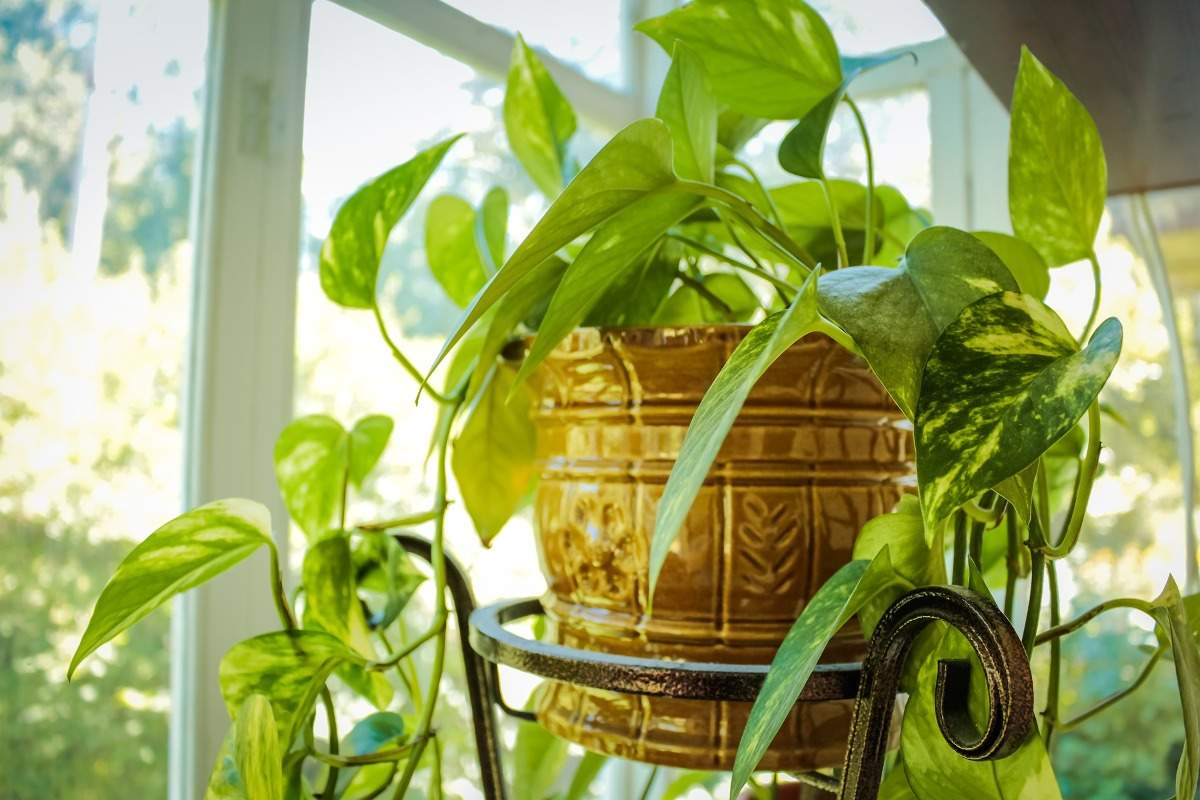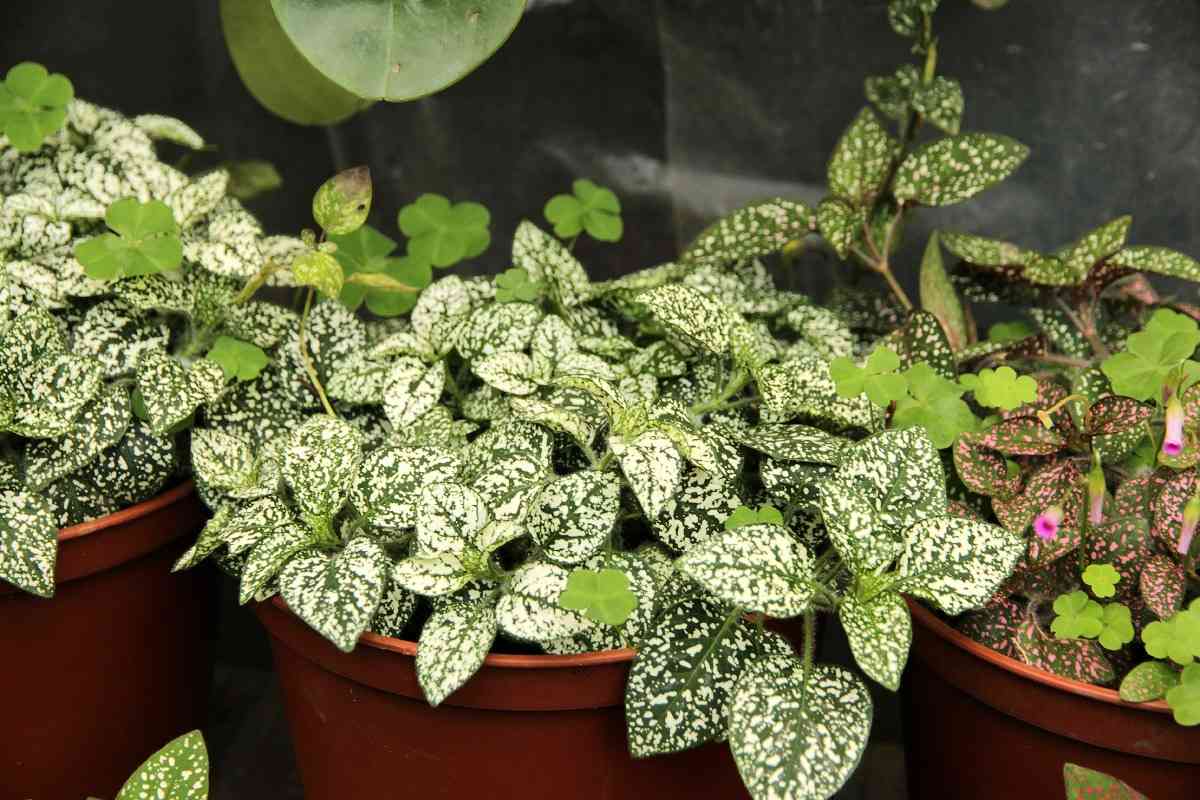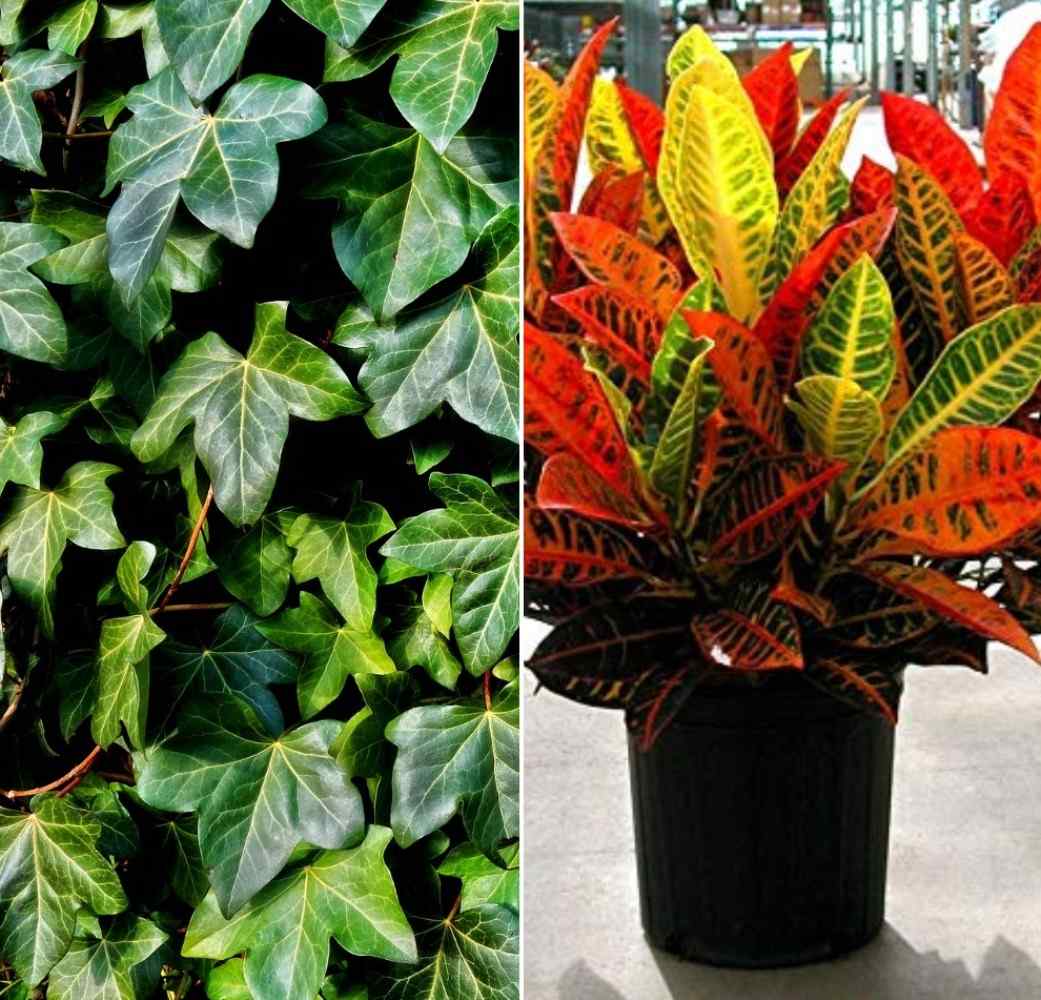Introduction: Hello gardeners we are back with a great information of growing indoor foliage plants. Foliage plants are considered to have decorative, colorful and interesting leaves. Such plants can make interesting garden spaces and can provide shade, color, and cover for a range of needs.
A step by step guide to growing indoor foliage plants
Foliage plant is used to describe a collection of leaves. As an effect, the term foliage plant is usually used to describe green plants with ornament-like leaves. Given that our modern-day lives leave us craving for clean air quality, foliage plants are a great addition to develop the air quality of our homes, making foliage plants popular among indoor plant options. Using foliage for decoration and cover has the advantage of being a long-lasting effect that can outlast shorter-term flowers and annuals. This can have such advantages as ongoing decorative appeal, longer-term shading or cover and even food sources where relevant.
Foliage plants add a bit of greenery to indoor space and can even help clean the air. Plants that generally live in the rainforest, a tropical setting or even a desert can get acclimated to the conditions in your home. Choosing the right plant to grow based on the conditions in your home and learning how to care for that plant is key to your success as a grower of houseplants.

Foliage plants are beautiful, colorful, interesting, and easy to grow. Foliage plants for containers add color, form, and texture to container garden designs. Many are easy to produce and maintain, and most overwinter well. Ornamental grasses are also foliage plants and many grow well in container gardens.
Basic requirements of foliage plants
Foliage plants have a few basic requirements for proper growth and development. The sunlight obtainable needs to be optimal for photosynthesis. The foliage plant environment needs to have the necessary humidity for the plant you are trying to grow. Since the leaves of foliage plants are sensitive to temperature, it is very important to ensure the leaves are not exposed to extreme heat or cold temperatures and are able to grow in ideal controlled temperatures. Last but not least, the watering of the Foliage plant is very important for its growth and function.
You should not miss the How to Create a Miniature Garden.
These Foliage plants can act as natural filters against bad air quality and help build a healthier home environment. This is why Foliage plants opted as indoor Foliage plants. While choosing a foliage plant it is very important to understand the nature of the plant and the way the leaves will react to seasonal changes.

Choosing foliage plants for your home
In choosing your Foliage plants, consider the location’s environment. Find out whether a particular plant will only survive or thrive in that environment. It is very important, to begin with, good quality, healthy, pest-free plants. Make sure plant leaves possess good color for the species, with no brown tips or margins.
Lighting for growing indoor foliage plants
Light can be a big issue for the health and survival of Foliage plants. Some Foliage plants will survive in and prefer to live in low light conditions. Others require brightly lit interiors to survive.
A south-facing window is generally the ideal location for Foliage plants that need bright light. North-facing or east-facings are better for plants that choose darker conditions. Keep in mind that there are few plants that will survive in completely dark or very dimly lit rooms. If a room has very small windows or windows that just don’t let in a lot of suns, putting a grow light in those rooms might be necessary.
The best temperature for growing indoor foliage Plants
The best temperature range for most indoor foliage plants is between 60 and 80°F. (16-27°C.) These temperature ranges are similar to those found in the understory of a tropical forest. Chilling injury occurs below 50°F for most tropical plants.

Temperatures in the indoor and office can be quite variable, changing daily or seasonally. Remember that southern and western exposures are warm because of the amount of sunlight, while eastern and northern are moderate or cool. Avoid locating Foliage plants on cold window sills, or where there are cold or hot drafts from opening doors and heating or air conditioning vents. Leaf spots, blotches, downward curled foliage, and slowed growth are signs of bad temperatures. Temperatures that are too high can cause yellowish-green foliage, which can have brown, dry edges or tips and spindly growth. Insect, mite and disease problems can develop quickly under warm conditions as well.
You may also like the Growing Indoor Flowering Plants.
Soil mix for growing indoor foliage Plants
Make sure to have the proper soil mix for each Foliage plant as well and a good mix won’t break down or degrade over time. Be sure to use a mixture of particle sizes so there are excellent drainage and aeration for the plant’s roots. Most plants do well in a soil mix containing one to two parts potting soil, one to two parts moistened peat moss and one part coarse sand. Native soil from the indoor garden can be used in a mix if it’s pasteurized.
Foliage plants can be grown in a variety of soil mixes, but are easier to care for if planted in soils containing high levels of peat moss. Such soils retain water and fertilizer and provide excellent aeration if peat moss is mixed with coarse sandy soils or perlite. The following soil combinations are suggested for growing foliage plants, or prepackaged soils can be obtained with similar properties.
- 2 parts peat, 1 part perlite, 1 part coarse sand.
- 1 part peat. 1 part vermiculite, 1 part coarse sand.
- 2 parts peat, 1 part coarse sand.
watering for growing indoor foliage Plants
Indoor Foliage plants are adapted to regions where the soil is moist, but not continually saturated with water. So, never allow soils to become completely dry between watering, and when to waterlog, apply enough water to thoroughly wet the entire soil ball. One of the best methods to do this in large plantings is with automatic watering systems. Watering frequency mainly depends on weather, type, and size of plant and stage of plant growth.
Containers with drainage holes must be placed in a saucer or other containers and sufficient water applied at each waterlog until excess water drains out the bottom. This water should then be discarded since pots must not be allowed to stand in water for any length of time. Containers without drainage must have a layer of coarse gravel placed in the bottom to allow space for excess water. A good method to check these containers for excess water is to lay them on their side in a sink or to use a dip-stick inside a hollow pipe. Poor watering probably harm or kill Foliage plants more than any other care issue. A regular problem is over-watering plants and too much water causes the roots to rot.
Application of fertilizers for growing indoor foliage Plants
When foliage plants are used for interior design purposes, little fertilization is required, and then it is desirable to keep plants from growing excessively. Application of fertilizers more than once a month is unnecessary and in most cases four applications a year will be sufficient unless considerable new growth is desired. Many types of fertilizers are obtainable for specialized indoor use and are frequently more convenient than types sold for yards or gardens. Follow directions given on pots or containers when using pre-packaged products sold specifically for “foliage plants”.
Some of the indoor foliage plants
Here we discuss some of the indoor Foliage plants are given below;
Aluminum plant
The aluminum plant is a bush type plant that grows up to 12 inches tall and displays glossy green and silver oval-shaped leaves. Place the Aluminum plant in a brightly lit spot with some sunlight to encourage it to thrive and grow well. Pruning each spring encourages new growth and spread.
Enjoy the fun, metallic-silver splotches of aluminum plant green leaves. It makes a tabletop plant or hanging basket. If the aluminum plant gets leggy, move it to brighter light and pinch it back to force more compact growth.
Cast Iron Plant
Cast iron prefers rich, fertile soil, but it will tolerate a range of soil conditions. If you want to use cast iron plant as a groundcover, space the plants 12 to 18 inches apart to leave the room to grow and water them initially to help them get established. After that, they will be quite drought-tolerant, though they will perform better if watered periodically.
Croton plants
This croton species enjoy its bright light, high humidity levels and moist soil which drains well. The plant leaves on the most popular variety are leathery types which are green with yellow prominent veins that turn a reddish-purple color. Because these plants require bright light and space they’re grown quite often in conservatories or greenhouses.
Many croton plants grow best in full sun, but many cultivars can tolerate, and even prefer light shade partial shade. As houseplants, croton plants add texture and color to dull interiors. When used indoors select a cultivar such as the Petra croton, which can remain brightly colored in indoor light conditions. Even these cultivars will eventually lose partial color if adequate light is not obtainable.
Dumb Cane
The dumb cane plant is an easy to grow plant that survives well on basic care conditions that should be provided. Due to its easy-going nature, it’s become a popular ornamental foliage house plant. Once the plant matures it can reach up to 6ft in height, although 3 to 4ft is more common. Like many other foliage house plants they do make flowers in their natural habitat, but rarely indoors.
Golden Pothos
The golden pothos is a climbing type vine that has aerial roots. Because these grow up to 6 feet tall and only have thin stems they need support if a grower wants it to grow upwards in height rather than hanging. Common technique growers use to support the golden pothos is using a moss stick.
You may also consider Growing Hydroponic Exotic Plants.
Hostas
Hostas are just plain lusciously leafy and they come in many sizes, leaf shapes and in colors from lime green to blue-green, with yellows in between–some are striped and some are solid. These are known as a shade plant, but some will tolerate the sun.
They also come in small and large leaf types and leaves range from crinkly to smooth in texture. Mix blooming plants among your hostas look great in groupings and are a good selection for shady porches, decks or patios.
Colocasia or Elephant ears
These plants are graceful, elegant and often huge Foliage plants. Great for large pots, they produce in partial shade and come in an enormous range of leaf shape, size, and color. They like moist, warm conditions, but require to be kept sheltered from high winds. They can be grown indoors in bright, indirect or filtered light.
Kentia Palm
The kentia plant is said to be a vulnerable species native to Lord Howe Island in Australia. The plant is a feather type palm which grows up to 10ft tall indoors and displays elegant wide fronds. This palm is popular in Britain and is easy to grow; when applying the basic care conditions correctly. The kentia plant is faster growing than some of the other palm plants.
Caladium
Caladium plant leaves can be shaped like hearts, arrows, or lances in color combinations of red, pink, rose, white, chartreuse, and green. The brilliant foliage of this classic plant is often translucent, which makes them light up an indoor garden. They have brightened shady spots for generations, but now you have the option of newer selections that can take some direct sun.
China doll
China doll plant has a fine texture, even though individual leaves can be 2 feet long. It is generally sold with several plants in one container to give it a fuller appearance. Pinch or prune shoots regularly to maintain plants lush and full. It’s finely textured leaves add grace and elegance to any room and it fits well with a variety of decorating styles. Place several plants in one container to provide it a fuller appearance.
Incase if you miss the Potting Soil Mix for Vegetables.
Lucky Bamboo
The lucky bamboo plant is from the popular ornamental indoor plant genus “dracaena” and can be grown in water or soil. Indoors these grow up to 2 -3 ft tall and display small oval leaves and cane-like stalks. These are grown mostly in indoors and offices for decorative purposes and trained in different braided styles. They are easy to grow and care for.
Panda plant
The panda plant is a fairly easy succulent plant species to care for and maintain which is grown for its interesting furry leaves. The panda is a succulent type species grows thick leaves for water storage purposes, which means watering less often for the grower. These velvety plant leaves are greenish-gray in color.
Swiss cheese Plant
The Swiss cheese plant is an exciting foliage plant to develop and reaches well over 6 ft tall when grown indoors. Though it does flower the main attraction is the glossy green leaves that grow fairly tall. Do be warned this is a tropical plant that likes fairly warm conditions with humidity levels higher than many other indoor plants.
Moon Valley friendship plant
In the bright light, the Moon Valley friendship plant could offer small creamy-white flowers, but its most outstanding feature is its waffle-like foliage. If the Moon Valley plant becomes leggy, simply pinch back the stems to keep the plant compact.
Coleus
There are so many varieties with different leaf shapes, colors, and sizes, that the choices are overwhelming. From browns to reds, to vibrant pinks and greens, this is a plant that pretty covers the color spectrum.
Mixing different varieties of coleus can create a stunning display. Keeping them pinched back so they stay bushy, rather than leggy is very important. Also, cut off any flowers. Most coleus prefers shade to part shade.
Arrowhead plant
The Arrowhead plant is a very similar species to the Philodendron and is part of the same family of plants. These have to be well pruned to avoid too much growth and the leaves have various growth patterns depending on their maturity.
That’s all floks about growing indoor foliage plants and types of foliage plants.
You may be interested in Vegetable Seed Rate, Seed Treatment.